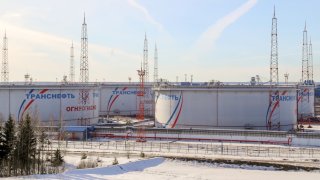
Oil prices rose Monday after Ukraine reportedly attacked a major Russia fuel terminal over the weekend, raising renewed concerns about supply disruptions.
The West Texas Intermediate futures contract for February gained $1.78, or 2.42%, to settle at $75.19 a barrel. The Brent contract for March rose $1.50, or 1.91%, to settle at $80.06 a barrel.
Ukrainian drones struck a major fuel terminal near St. Petersburg, a sources in Kyiv told the BBC and The Wall Street Journal. The Ust-Luga facility on the Baltic Sea exports 1.35 million barrels per day of crude oil, fuel and refined products, according to data from Kpler.
"The Ukrainian drone attack on the Baltic port raises the question: Is this going to be a policy decision by Ukrainians to attack Russian oil infrastructure? If that's the case, that's a problem," said Bob Yawger, managing director and energy futures strategist at Mizuho Americas.
Get Tri-state area news and weather forecasts to your inbox. Sign up for NBC New York newsletters.
The attack highlights the vulnerability of these facilities to drone strikes, not just in Russia but also elsewhere in the world particularly in the Middle East, said Andrew Lipow, president of Lipow Oil Associates.
"It's a pretty significant terminal they hit and if they continue to try to target Russian oil infrastructure that would be a game changer and that's what the market is pricing in here," said John Kilduff, a partner at Again Capital.
In the Middle East, meanwhile, several U.S. personnel are being evaluated for "traumatic brain injuries" after militants allied with Iran attacked an airbase in Iraq on Saturday with ballistic missiles and rockets, according to U.S. Central Command.
U.S. forces stationed in Iraq and Syria have repeatedly come under attack by Iran-allied militants since Israel's military operation in Gaza began. Houthi militants, also allied with Iran, have continued their attacks on shipping through the Red Sea, a crucial trade artery, despite U.S. airstrikes.
Money Report
The attacks have stoked worries that the U.S. and Iran are getting drawn into a regional conflict that could disrupt oil supplies.
Libya's National Oil Corporation, meanwhile, resumed full production at the Sharara oilfield on Sunday after protests shut down output for two weeks. Sharara is one of Libya's largest oilfields with capacity to pump 300,000 barrels per day.
Traders have generally been more focused on the supply and demand outlook than geopolitical risk.
The International Energy Agency has a bearish forecast for 2024, projecting that production outside OPEC, particularly in the U.S., will rise by about 1.5 million barrels per day, more than covering global demand growth of 1.2 million barrels per day.
OPEC, on the other hand, has presented a stronger outlook with oil demand forecast to grow by 2.2 million barrels per day, while production outside OPEC will grow by 1.3 million barrels per day.
"Investors want to be bullish but tepid data and cautious narrative from policymakers keep them on the backfoot," Tamas Varga, an analyst with PVM Oil Associates, wrote in a note.






